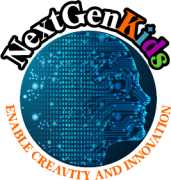
NEWS
- Home
- NEWS
News
The Impact of Kids in Tech
Afterschool tech club program Blog Post Program May 30, 2022
Afterschool tech club program Blog Post Program May 30, 2022
With statistics like this, getting kids interested in technology related fields becomes imperative to the growth of our community. According to Geek.edu, only 10% of college STEM graduates are in Computer Science. Comparing that to the above statistic saying 80% of STEM jobs will be in technology, a shift is clearly necessary. However, after school programs such as After School Tech Club encourage kids of today who may not have seen technology as a path for them to investigate and learn about all the amazing opportunities technology offers while also having a great time.
14 year old Naomi had this to say about the After School Tech Club: “I did not think I was going to like Tech Club at first,” she shared, “but it is really fun and interesting. I like that we get to build things, tear them apart, and build again. We also get to go on field trips and see real tech people at their jobs. I get to learn things that I do not learn in school.”
Naomi now plans to attend vocational high schools and pursue a career in Automotive Technology, Engineering Technology or Carpentry
Artificial Intelligence can unlock the value trapped in massive amounts of data at educational institutions and organizations. Access to this data through Artificial Intelligence can be used to create customized assessments of students in a skill-based education to help prepare them more quickly to advance in their program. AI can sift through the data a create a curriculum focused on a student’s strengths and needs, thus making the education program more useful leading to employment-ready graduates.